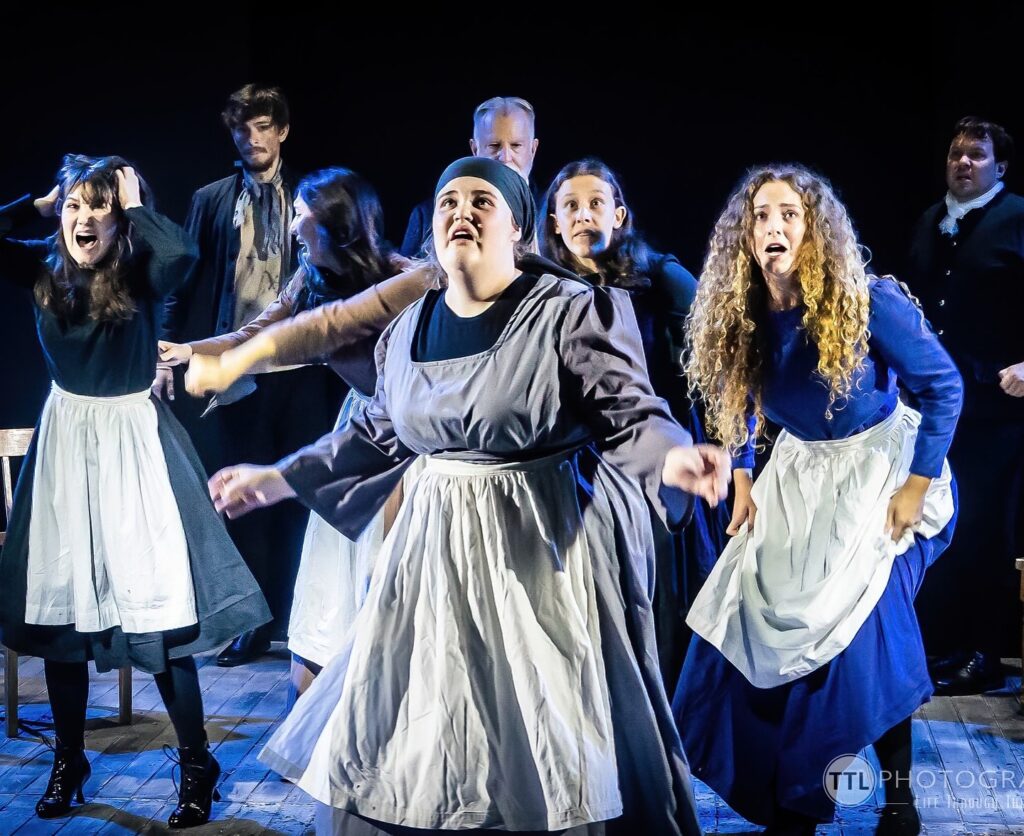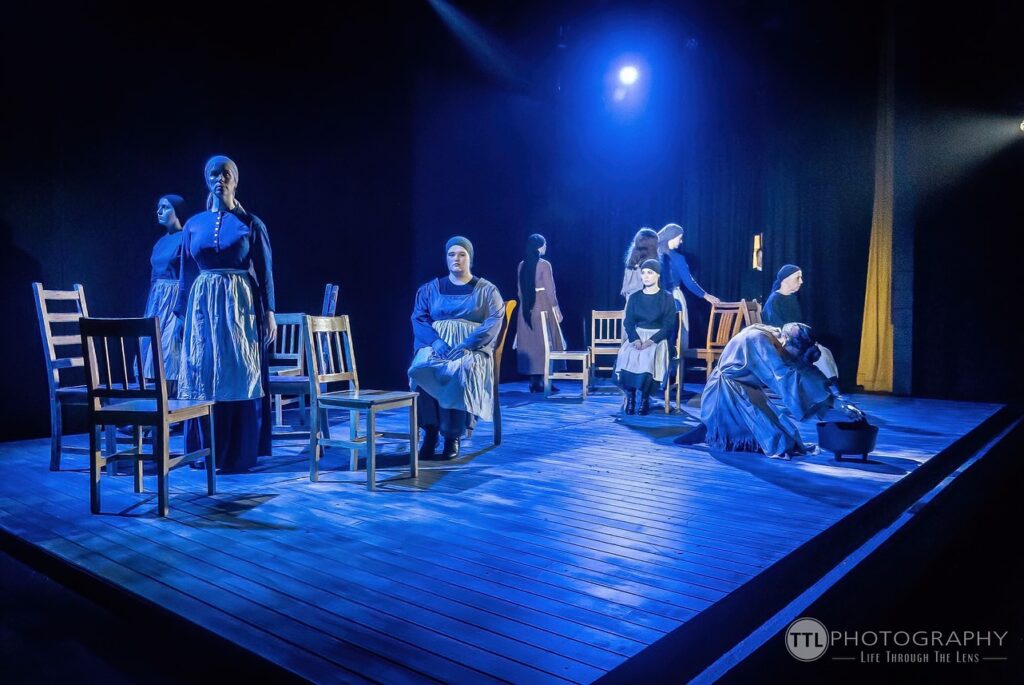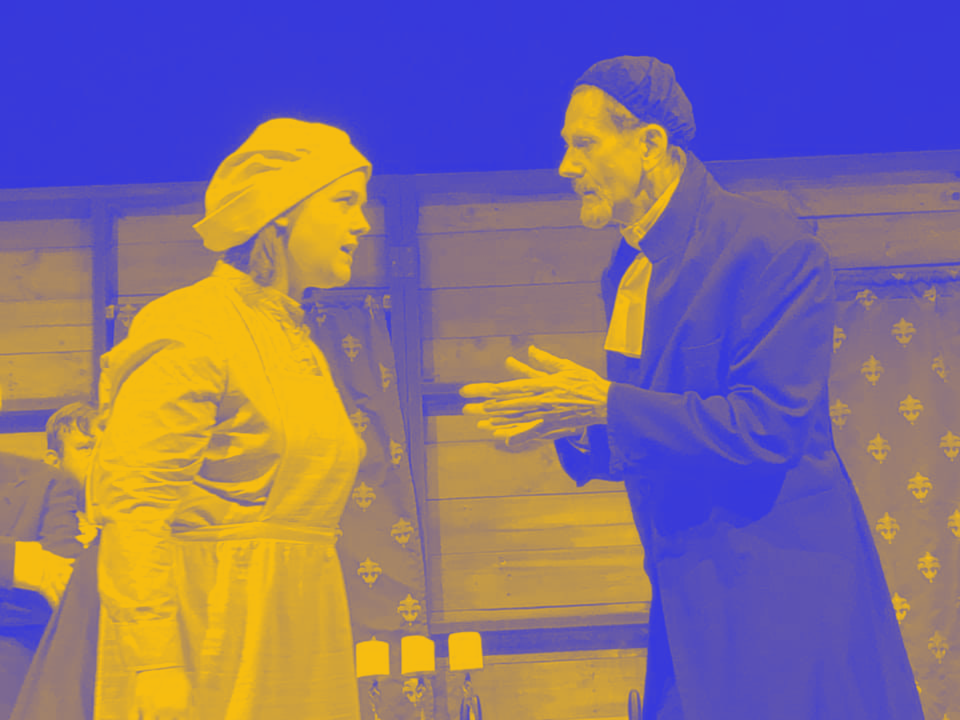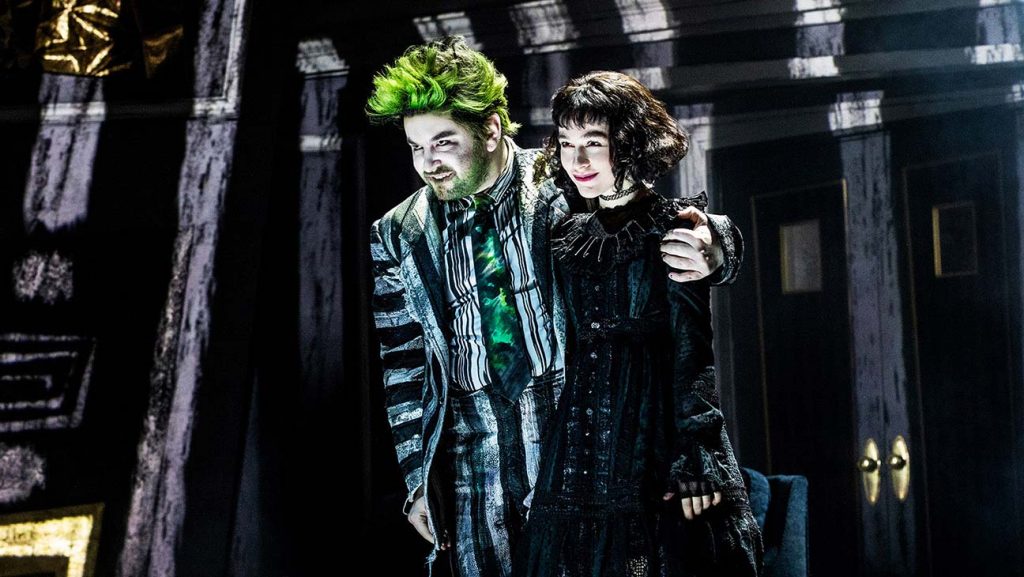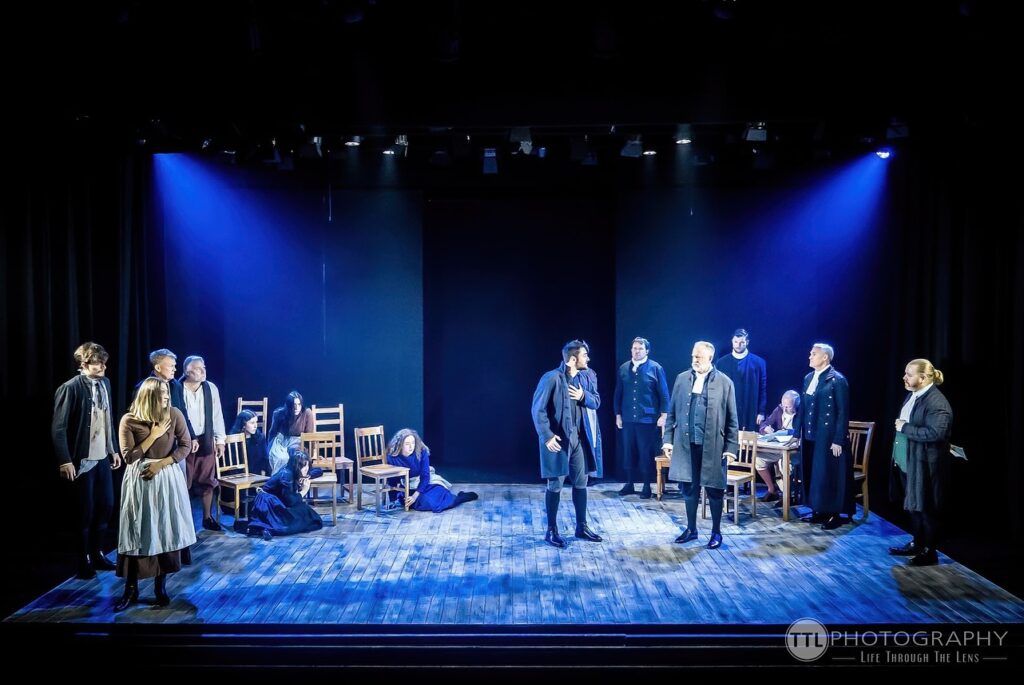
‘The Crucible’ // Gold Coast Little Theatre
‘The Crucible’ was crafted.
Gold Coast Little Theatre has chosen to dance with Arthur Miller’s classic, ‘The Crucible’ in their first production of 2025.
Set during the infamous Salem witch trials, ‘The Crucible’ ignites the chaos of a community gripped by hysteria and the catastrophic witch hunts that follow false accusations. Central to the plot is Abigail Williams (played by Angelique Giuffre), who cunningly exploits the Puritan town to target John Proctor (played by Dom Bradley), her former lover and employer. Williams’ actions weave a web of deceit that ultimately aims to ruin Proctor’s marriage with his wife, Elizabeth (played by Olivia French), and his life.
Although written in 1953, ‘The Crucible’ is still remarkably relevant today, especially as it examines the devastating impacts of hysteria on a community. While set against the backdrop of Salem’s witch trials, the message transcends to our modern day, especially when public panic, misinformation and “cancel culture” can provoke similar societal pressures. The fact that it still remains a classic cements it as a perfect choice and exciting text for any theatre to work with, especially if they choose to draw on these comparisons.
In Gold Coast Little Theatre’s presentation, it’s evident that Hunter Wall has a clear vision for their production – Wall is credited in the program as Director, Set Designer, Lighting Designer, Sound Designer, and Costume Designer, with Wall even making a small guest appearance in the production itself as one of the roles in the ensemble. This speaks to the essence of community theatre and the “wearing of many hats”, but also plays into Wall’s favour as it allows all elements of the production to blend cohesively into a solid show.
Set design was minimalistic, in a black-box-styled way, and featured a grey wooden lino floor with several brown wooden chairs scattered across the stage. This flooring defined the performance space and established a central oppressive area for communal activity in Salem. Scenes transitioned with the chairs being moved into new positions, and the occasional bed or table being brought on by actors.
Direction by Wall, with assistance by Jessica White, showcased an inventive use of these set pieces as transformative objects, embedding them into the narrative. For example, at the beginning of the production, ensemble members entered, hoisting chairs over their shoulders like sacks. This made a compelling visual that immediately highlighted the working class of Salem society. A particularly strong moment was when an ensemble member hauled in a single bed tied to a rope, with the rope clutched over their shoulder.
It would have been great to see this vice of transformative objects further explored, with chairs becoming part of the set, as it would have continued the style (created at the start) and add even more depth to the storytelling.
Wall also made extensive use of tableaus to communicate key plot points, particularly at the start of Acts. It did feel that this idea clashed with the directive for actors to change set in some scene transitions. What translated was, that after a blackout, lights faded up and caught actors mid-motion during a set change, making the cue feel premature. If committing to the blackout, it would be okay to leave the audience in the darkness a little longer.
Overall, Wall’s direction was notably polished, with actors displaying clear, instinctive responses to their roles. There were moments where attention to finer details could have elevated the production. For example, the prisoners’ portrayal was striking, with dirt smudging their legs, hands and faces, yet Elizabeth Proctor’s clean feet seemed out of place, contradicting the reality of the situation. Additionally, when Elizabeth scoops the bread flour into her hands off the table, she could use the apron around her waist as that would have enhanced the authenticity of the time. Small refinements of these details would have made the production slicker.
That being said, simultaneous staging was used expertly. A fantastic example of this was during the convulsion of Betty Parris (Cadence Smith) growing as the tensions between Abigail Williams and John Proctor grew. Lighting layered this, and while it was mostly moody and cool-toned throughout the production, in this particular moment Wall added a gradual heat to the colouring, which semiotically conveyed the growing tension between the central characters.
With their use of creating the action as if it were happening at the same time as the actor explaining it, Wall made the heavy dialogue flash by and kept the audience captivated, which is not an easy thing to do with this text. The pace of ‘The Crucible’ beats along effectively, maintaining a gripping rhythm that makes the first 90-minute act fly by. The one small item of note, however, is that the immersion was occasionally disrupted by the noise from the front-of-house team, particularly during the seating of latecomers. Implementing a stricter latecomer policy could help prevent taking audience members out of Wall’s gripping world.
If anything, one thing that made this production such a success was its magical cohort of actors who all delivered in volumes.
Dom Bradley anchored the cast with a solid performance as John Proctor, bringing a convincing and powerful presence to the lead role. Angelique Giuffre was fiercely brilliant as Abigail Williams, a true standout with her cunningly manipulative portrayal. Giuffre’s use of body, physical action and vocal control were spellbinding. Olivia French depicted Elizabeth Proctor as a tormented wife with depth and sincerity.
As Reverend Samuel Parris, Ricky Moss really shone in the second act. Moss’ ability to manipulate the proceedings, like a devil on the judges’ shoulder, had the audience palpably frustrated. This evoked the level of annoyance one might feel towards Mr Collins at a ‘Pride and Prejudice’ ball.
Jolan Walker as Reverend John Hale brought a calming energy that added a refreshing dimension to the ensemble. Craig Kocinski as Giles Corey provided much-needed comic relief. Kocinski’s portrayal of the honest and headstrong farmer had audiences laughing, though they should take care not to let the comedic elements overshadow the more serious moments. Carey Parsons’ portrayal of Judge Hathorne displayed a perfect ignorant blindness, strong in conviction and commanding in stage demeanour.
Isabel Laver was incredible as Tituba, another standout performance that added layers of intrigue and emotion to the show. Cadence Smith, as Betty Parris, displayed exceptional physicality; her exorcism-like convulsions left the audience gasping in shock and awe.
Overall, the entire cast of ‘The Crucible’ at Gold Coast Little Theatre brought this charged narrative to life with a synergy that showcased the play’s intense themes. It would have been great to see more consistency with the accent work, as this varied considerably: from Irish to Classic English, to neutral Australian and then an odd Southern-twanged American accent.
Gold Coast Little Theatre’s production of ‘The Crucible’ proves that even a story as old as the Salem witch trials can still stir up a cauldron of emotions. If you’re looking for a magical evening bound to leave you dancing for the right reasons, then look no further.
‘The Crucible’ performs at Gold Coast Little Theatre until Saturday, 22 February 2025. For tickets and show information, visit GCLT’s website.
